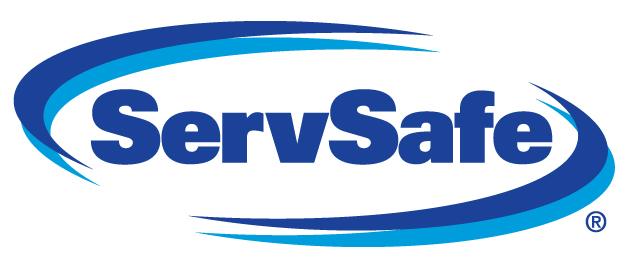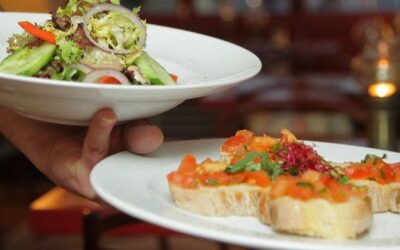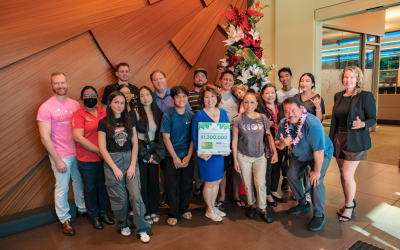Notice and highlights courtesy of Tina Rogers, Ai Kahu Culinary Solutions, & NRA ServSafe
On September 2, 2018 the State of Hawaii’s revised Food Safety Law goes into effect, and this what it means to your food service establishment
Five Highlights from the New FDA Food Code
By now, you’ve probably heard about the recently released 2017 FDA Food Code and have likely wondered whether it would bring any changes to the material you present in your ServSafe classes.
The Food Code represents the U.S. Food and Drug Administration’s best advice for a uniform system of provisions to address food safety and protection. It establishes sound requirements that help to prevent foodborne illness and injury and to eliminate food safety hazards in foodservice operations.
While the 2017 Food Code includes many changes and updates, Vito Palazzolo, MSPA, RS-REHS, CP-FS, Manager, Food Safety & Industry Relations for the National Restaurant Association, has identified five highlights that are extremely important for foodservice operations to be aware of and to implement.
1. Person in Charge. The person in charge (PIC) shall be a certified food protection manager who has shown proficiency of required information through passing a test that is part of an accredited program and be on-site at all times while the facility is in operation. Also, this person must be designated in writing as the PIC.
How is this a change? Previously anyone on staff could be the PIC, and while they were so designated, they did not have to be either on-site or certified. Now, the PIC has to be a certified food protection manager, and has to be on site. This requirement increases responsibility and accountability, which will drive food safety. It also means that foodservice establishments will need to have more certified food protection managers, so that there can be a certified manager on site during every shift.
2. Use of Bandages, Finger Cots, or Finger Stalls. If used, an impermeable cover such as a bandage, finger cot or finger stall located on the wrist, hand or finger of a food employee working with exposed food shall be covered with a single-use glove.
What’s new? This is a stricter requirement about wound protection. The code identifies a specific physical hazard and stresses the need for extra protection, since no one wants to find a bandage in their food. This additional protection not only helps to reduce the chance of the physical hazard of a lost bandage, but by requiring two layers of protection, it also reduces the opportunity for biological hazards such as blood or pus from a wound to get into food.
3. Clean-up of Vomiting and Diarrheal Events. A food establishment shall have written procedures for employees to follow when responding to vomiting or diarrheal events that involve the discharge of vomitus or fecal matter onto surfaces in the food establishment.
©Copyright 2018 National Restaurant Association ServSafe.com | @ServSafe 233 S. Wacker Drive, Suite 3600 | Chicago, IL 60604 | (800) 765-2122
The procedures shall address the specific actions employees must take to minimize the spread of contamination and the exposure of employees, consumers, food, and surfaces to vomitus or fecal matter.
How does this differ from prior food code recommendations? In the past, there was no requirement for written standard operating procedures (SOPs) that addressed bodily fluid clean-up. This change stresses the need to keep written procedures at the facility that include procedures for actions, documentation, and training. This too is a matter of accountability and responsibility: foodservice operations must put their SOPs in writing and ensure that all employees have been trained in these tasks.
4. Time Change for the Following Meats. 68°C (155°F) for 17 seconds at the temperature specified for the holding time for ratites, mechanically tenderized, and injected meats; the following if they are comminuted: fish, meat, game animals commercially raised for food. Related to this is a Time Change for Poultry. 74°C (165°F) or above for < 1 second (instantaneous) for poultry.
What’s new and different? These changes seem minor, but they are worth sharing as they represent a departure from previous recommendations. There is a time change increase for some kinds of meats from 15 to 17 seconds, and a time decrease for poultry from 15 seconds to instantaneous.
5. Variance for Temperature Control. (A) Except as specified in the Food Code, control for a working supply of time/temperature control for safety (TCS) food before cooking, or for ready-to-eat, time/temperature control for safety (RTE, TCS) food that is displayed or held for sale or service: (1) Written procedures shall be prepared in advance, maintained in the food establishment, and made available to the regulatory authority upon request that specify.
What’s important to know about this? This rule is about the importance of documenting processes that may be different from existing standards. Trendy processes—which may include things like sous vide, using smoke to treat or preserve food, reduced oxygen processing (ROP), or acidifying food—can have a higher risk for food safety issues. Restaurants may not be aware that they need a written AND approved plan for things like this. If a process varies from the standard, it must be reviewed and approved before being implemented. Only after an operator has obtained a variance from the appropriate regulatory authority can that process be used to prepare food. Once again, this is about accountability for food safety, which should always be the top priority of foodservice operations. After written SOPs have been submitted to the appropriate local or state health department and approval has been received, staff members must be trained on their use and the documents themselves must be kept at the facility.
For additional information on changes to the Food Code and how they affect daily foodservice operations, visit www.foodsafetyfocus.com.
©Copyright 2018 National Restaurant Association ServSafe.com | @ServSafe 233 S. Wacker Drive, Suite 3600 | Chicago, IL 60604 | (800) 765-2122
 Questions or want to schedule an on site private training?
Questions or want to schedule an on site private training?
email us or find additional information here
https://www.aikahuculinarysolutions.com




0 Comments